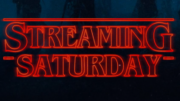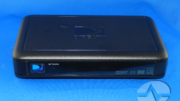It wasn’t that long ago. Only a decade ago, if you missed recording a show you’d missed out forever. Three decades ago if you missed it live it was gone unless you caught it in summer reruns. Today, the shows you’ve missed in their first airing are still with you. You can watch them on demand through your cable or satellite provider, or you can stream them using Netflix, Hulu, a provider app, or some other service. It’s practically impossible to miss most shows unless you want to.
What’s the best way to catch that program you missed?
In order to understand your choices, you’ll need to look at them one by one.
DIRECTV On Demand
DIRECTV On Demand has nearly every show on a national network that’s aired over the last 72 hours, plus many that have aired a lot longer. It’s included in your DIRECTV subscription. You can watch on your TV or mobile device. This includes shows that have just aired in many cases.
DIRECTV On Demand, when watched on your TV, will always have the best quality even if you have a poor internet connection. The entire program records to your DVR so you can watch it without having the download stop to catch up.
On mobile devices, DIRECTV programming is almost always in a “stream saver” format that sacrifices a bit of quality to make sure you’re not burning through a data plan. That’s important if you’re not an AT&T Unlimited customer who can stream DIRECTV for free.
DIRECTV On Demand programs usually have limited commercials that you can’t skip.
Subscription VOD services like Netflix and Hulu
Netflix, Hulu, Prime, and the like are collectively called “Subscription VOD” services. You pay for them, and you get content from a lot of different sources provided by one app.
Depending on how much you pay or which app you’re using, there can be commercials and the way this is handled can be very annoying. If you fast forward or rewind past a commercial break, you could be forced to watch the commercial even if you’ve already watched it.
Hulu generally has shows the day after they air. You’ll have to wait if you just walked in on the end of something. Netflix and Prime Video tend to get whole seasons long after the season has aired. That’s a lot of waiting.
Provider apps
Apps like Watch ABC, NBC, CNNgo, and that sort of thing are called “provider apps.” They generally are free if you have a cable or satellite subscription and they usually have shows the day after they air. Unfortunately, they also usually have a lot of commercials you can’t skip past. What’s worse is they repeat the same commercial over and over again.
I think provider apps are great if that’s all you have access to but pretty much any other way to get your content is going to be great. Also, depending on the app you may not have the greatest experience. From what I’ve seen, provider apps are the ones that are most likely to buffer or crash.
Choose your poison, as they say
I think the best thing is that you have choices. As a satellite TV customer you’re automatically going to have access to the DIRECTV app, the on demand selection, and most provider apps, all for the same price. You can pile subscription VOD on top of that, and I think at this point most of us do. So no matter what you’re looking for, you’ll get it.
Personally I almost always look at DIRECTV On Demand first. With a fast connection you never have to wait for downloading and you get the best quality. Plus it’s easy to press the INFO button on a show and look at “Other Showings.” I hate Hulu’s design and it makes it very hard for me to find what I’m looking for much of the time.





